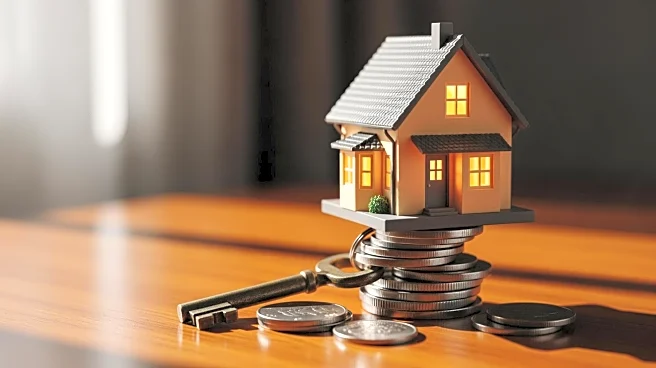What's Happening?
A recent analysis by Realtor.com has identified ten U.S. cities where home values have significantly increased since the COVID-19 pandemic. These cities are evenly split between the South and Northeast, including Knoxville and Chattanooga in Tennessee,
and Syracuse and Rochester in New York. The report highlights that Knoxville experienced the largest increase, with home values soaring by nearly 86%, equating to an average rise of $190,000 between October 2019 and October 2025. Fayetteville, Arkansas, followed closely with an 84.5% increase, adding more than $195,000 to home values. Despite a broader trend of devalued homes across the U.S., relatively few are selling at a loss, according to Zillow's senior economic researcher Treh Manhertz. He notes that the surge in home values over the past six years has left most homeowners with significant equity, indicating a normalization rather than a crash.
Why It's Important?
The increase in home values in these cities is significant as it reflects the shifting dynamics of the U.S. real estate market post-pandemic. The migration of new residents to these areas has driven demand, leading to higher property values. This trend is crucial for homeowners who have gained substantial equity, providing financial security and potential leverage for future investments. However, it also highlights the growing housing affordability crisis, particularly in rural America, where many homes have lost value. The disparity in home value trends underscores the need for targeted housing policies to address affordability and support equitable growth across different regions.
What's Next?
As home values continue to rise in these cities, local governments and policymakers may need to address the implications for housing affordability and community development. Strategies could include increasing housing supply to meet demand, implementing affordable housing initiatives, and supporting infrastructure improvements to accommodate population growth. Additionally, real estate investors and developers might focus on these high-growth areas, potentially leading to further economic development and job creation. Monitoring these trends will be essential for stakeholders to adapt to the evolving real estate landscape.
Beyond the Headlines
The surge in home values in specific cities may have broader implications for regional economic development and demographic shifts. As more people move to these areas, there could be increased demand for local services, schools, and transportation infrastructure. This growth might also influence cultural and social dynamics, as new residents bring diverse perspectives and needs. Long-term, these changes could reshape the identity and economic profile of these cities, presenting both opportunities and challenges for local communities.

















